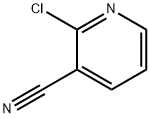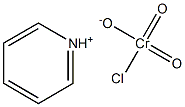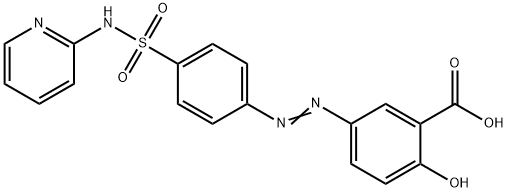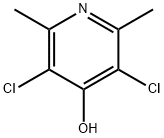2-Chloropyridine
- CAS NO.:109-09-1
- Empirical Formula: C5H4ClN
- Molecular Weight: 113.54
- MDL number: MFCD00006228
- EINECS: 203-646-3
- SAFETY DATA SHEET (SDS)
- Update Date: 2024-12-18 14:15:32

What is 2-Chloropyridine?
Chemical properties
Clear colourless to light yellow liquid
The Uses of 2-Chloropyridine
2-Chloropyridine (2-CPY) has been identified as a trace organic chemical in process streams, wastewater and even drinking water. Furthermore, it appears to be formed as a secondary pollutant during t he decomposition of specific insecticides.
The Uses of 2-Chloropyridine
2- Chloropyridine is used as an intermediate chemical in the production of various pyrithione, for use in cosmetics, personal care products and pharmaceutical products.
Definition
ChEBI: 2-chloropyridine is a monochloropyridine.
Synthesis Reference(s)
Synthetic Communications, 19, p. 897, 1989 DOI: 10.1080/00397918908051009
Synthesis, p. 337, 1990
General Description
A colorless oily liquid. Toxic by ingestion and/or skin absorption. Used to make other chemicals.
Air & Water Reactions
Slightly soluble in water and denser than water.
Hazard
Toxic by ingestion.
Fire Hazard
Combustible material: may burn but does not ignite readily. When heated, vapors may form explosive mixtures with air: indoors, outdoors and sewers explosion hazards. Contact with metals may evolve flammable hydrogen gas. Containers may explode when heated. Runoff may pollute waterways. Substance may be transported in a molten form.
Safety Profile
Poison by ingestion, inhalation, skin contact, and intraperitoneal routes. Combustible when exposed to heat or flame. Can react with oxidizing materials. When heated to decomposition it emits very toxic fumes of Cl-, NOx, and phosgene.
Purification Methods
Dry 2-chloropyridine with NaOH for several days, then distil it from CaO under reduced pressure. [Beilstein 20/5 V 402.]
Properties of 2-Chloropyridine
| Melting point: | -46 °C |
| Boiling point: | 166 °C/714 mmHg (lit.) |
| Density | 1.2 g/mL at 25 °C (lit.) |
| vapor pressure | 1.7 mm Hg ( 20 °C) |
| refractive index | n |
| Flash point: | 149 °F |
| storage temp. | Refrigerator |
| solubility | 27g/l |
| form | Liquid |
| pka | 0.49(at 25℃) |
| color | Clear colorless to light yellow |
| PH | 6-7 (27g/l, H2O, 20℃) |
| Water Solubility | 27 g/L (20 ºC) |
| BRN | 105788 |
| CAS DataBase Reference | 109-09-1(CAS DataBase Reference) |
| NIST Chemistry Reference | Pyridine, 2-chloro-(109-09-1) |
| EPA Substance Registry System | 2-Chloropyridine (109-09-1) |
Safety information for 2-Chloropyridine
| Signal word | Danger |
| Pictogram(s) |
 Corrosion Corrosives GHS05  Skull and Crossbones Acute Toxicity GHS06  Health Hazard GHS08  Environment GHS09 |
| GHS Hazard Statements |
H302:Acute toxicity,oral H315:Skin corrosion/irritation H318:Serious eye damage/eye irritation H335:Specific target organ toxicity, single exposure;Respiratory tract irritation H373:Specific target organ toxicity, repeated exposure H410:Hazardous to the aquatic environment, long-term hazard |
| Precautionary Statement Codes |
P262:Do not get in eyes, on skin, or on clothing. P273:Avoid release to the environment. P280:Wear protective gloves/protective clothing/eye protection/face protection. |
Computed Descriptors for 2-Chloropyridine
2-Chloropyridine manufacturer
New Products
(S)-3-Aminobutanenitrile hydrochloride 4-Methylphenylacetic acid N-Boc-D-alaninol N-BOC-D/L-ALANINOL Tert-butyl bis(2-chloroethyl)carbamate 3-Morpholino-1-(4-nitrophenyl)-5,6-dihydropyridin- 2(1H)-one Furan-2,5-Dicarboxylic Acid Tropic acid 1-Bromo-3,5-Di-Tert-Butylbenzene S-2-CHLORO PROPIONIC ACID ETHYL ISOCYANOACETATE 2-Bromo-1,3-Bis(Dimethylamino)Trimethinium Hexafluorophosphate 4-IODO BENZOIC ACID 3-NITRO-2-METHYL ANILINE 1-(2,4-DICHLOROPHENYL) ETHANAMINE (2-Hydroxyphenyl)acetonitrile 4-Bromopyrazole 2-(Cyanocyclohexyl)acetic acid 4-methoxy-3,5-dinitropyridine 1-(4-(aminomethyl)benzyl)urea hydrochloride 2-aminopropyl benzoate hydrochloride diethyl 2-(2-((tertbutoxycarbonyl)amino) ethyl)malonate tert-butyl 4- (ureidomethyl)benzylcarbamate Ethyl-2-chloro((4-methoxyphenyl)hydrazono)acetateRelated products of tetrahydrofuran








You may like
-
 2-Chloro pyridine CAS 109-09-1View Details
2-Chloro pyridine CAS 109-09-1View Details
109-09-1 -
 2-Chloropyridine, 99% CAS 109-09-1View Details
2-Chloropyridine, 99% CAS 109-09-1View Details
109-09-1 -
 2-CHLOROPYRIDINE CAS 109-09-1View Details
2-CHLOROPYRIDINE CAS 109-09-1View Details
109-09-1 -
 2-Chloropyridine CAS 109-09-1View Details
2-Chloropyridine CAS 109-09-1View Details
109-09-1 -
 1975-50-4 98%View Details
1975-50-4 98%View Details
1975-50-4 -
 2-HYDROXY BENZYL ALCOHOL 98%View Details
2-HYDROXY BENZYL ALCOHOL 98%View Details
90-01-7 -
 14714-50-2 (2-Hydroxyphenyl)acetonitrile 98+View Details
14714-50-2 (2-Hydroxyphenyl)acetonitrile 98+View Details
14714-50-2 -
 118753-70-1 98+View Details
118753-70-1 98+View Details
118753-70-1